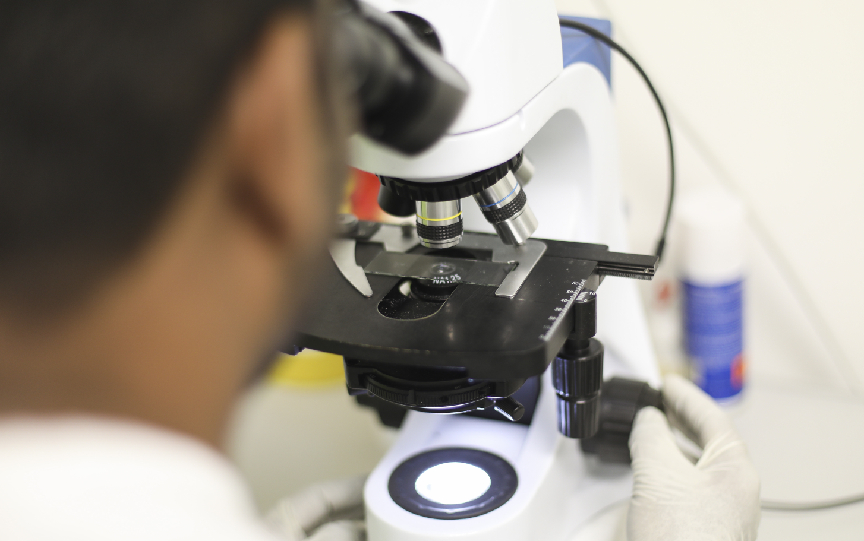PPARγ signaling protects hair follicle stem cells from chemotherapy-induced apoptosis and epithelial-mesenchymal transition
Ilaria Piccini, Lars Brunken, Jérémy Chéret , Sushmita Ghatak, Yamus Ramot, Majid Alam , Talveen S Purba , Jonathan Hardman , Hanna Erdmann , Francisco Jimenez , Ralf Paus , Marta Bertolini
Br J Dermatol, 2021
In this article, the therapeutic potential of the PPARγ agonist N-Acetyl-GED-0507-34-Levo (NAGED) in preventing chemotherapy-induced alopecia (CIA) is reported. CIA is a common side-effect experienced by patients with cancer who have to undergo chemotherapy. In the majority of patients, the hair loss is transient. In some, it is permanent and termed permanent CIA (pCIA).
Because other permanent forms of hair loss go hand-in-hand with damage to the hair follicle, characterized by epithelial hair follicle stem cells (eHFSCs) apoptosis and epithelial-mesenchymal transition (EMT), the scientists wanted to understand if pCIA is 1) also associated with EMT and 2) can be prevented or mitigated by modulating the drug-induced damage to the hair follicle. To this end, they took advantage of the novel, PPARγ agonist N-Acetyl-GED-0507-34-Levo (NAGED). Despite not being able to prevent 4-HC-induced catagen induction, NAGED mitigated hair bulb dystrophy and eHFSCs apoptosis and pathological EMT induced by the chemotherapy agent. These protective effects were sufficient to prevent the previously observed eHFSCs depletion. Taken together, the results suggest that NAGED may promote faster hair recovery after chemotherapy and, quite possibly, other alopecias characterized by eHFSC apoptosis. These promising findings pave the way for clinical trials aiming to understand if NAGED may decrease the incidence of pCIA in patients who undergo chemotherapy.
Read the full story:
The hair follicle-psoriasis axis: Shared regulatory mechanisms and therapeutic targets
Takahiro Suzuki, Taisuke Ito, Amos Gilhar, Yoshiki Tokura, Kristian Reich, Ralf Paus
Exp Dermatol., 2021
There is little intellectual and scientific exchange between physicians and investigators actively working and/or researching psoriasis and those interested in hair growth. However, both fields are intimately intertwined, and psoriasis and hair growth share more common features than what one would initially expect. For example, psoriasis tends to preferentially affect the scalp, with lesions being almost confined by the hairline. Furthermore, drugs and insults that trigger psoriasis also inhibit hair growth, while antipsoriatic agents have been reported to promote hair growth.
To provide a detailed overview of this topic, the authors report the clinical and histopathological evidence of the proposed „hair follicle-psoriasis axis “and discuss the evidence of overlapping mechanistic pathways and molecular mediators between both biological phenomena. Finally, the authors propose a working hypothesis and discuss the clinical relevance of the hair follicle-psoriasis axis. Together, the review hopes to reawaken scientific and medical interest in the “hair follicle-psoriasis axis” concept by integrating different insights and concepts that support its existence and is a recommended read for those actively involved in hair growth or psoriasis medical or scientific research.
Read the full story:
Mitochondrially localized MPZL3 emerges as a signaling hub of mammalian physiology
Tongyu C Wikramanayake, Carina Nicu, Jérémy Chéret, Traci A Czyzyk, Ralf Paus
Bioessays., 2021
In this review article, the authors focus on the physiological roles of a protein named Myelin Protein Zero-like 3 (MPZL3). MPZL3 is a protein that localizes to the mitochondria but is not directly involved in oxidative phosphorylation. The review extensively discusses the interacting partners of MPZL3, which include mitochondrial and non-mitochondrial proteins, and its regulatory capacity over cellular metabolism and circadian rhythm. In order to give an overview of the pleiotropic role(s) of MPZL3, the authors compile the data from studies describing genetic deletion or knockdown of the gene encoding MPZL3, as well as studies showing an association between MPZL3 over/under-expression and cancer. The review also extensively discusses the role of MPZL3 in different aspects of hair and skin development and homeostasis.
Altogether, the authors provide a solid argument for the further study of MPZL3 in the regulation of circadian processes and metabolism, suggesting that MPZL3 may be a signaling hub that modulates mitochondrial activity in response to CLOCK and PPARγ-mediated signaling. In turn, the mitochondrial response may itself modulate CLOCK and PPARγ in a feedback loop.
Read the full story:
A folliculocentric perspective of dandruff pathogenesis: Could a troublesome condition be caused by changes to a natural secretory mechanism?
Susan L Limbu, Talveen S Purba, Matthew Harries, Tongyu C Wikramanayake, Mariya Miteva, Ranjit K Bhogal, Catherine A O’Neill, Ralf Paus
Bioessays, 2021
Dandruff is a common condition that affects the scalp and can lead to psychological distress. The pathogenesis of dandruff remains poorly understood and is thought to be caused by the interplay of several factors and tissues, including the hair follicle. Inspired by the notion that the elements known to impact the development and incidence of dandruff do not fully explain why dandruff only occurs in the scalp, the authors take a folliculocentric approach to the question. By approaching the topic in light of the unique immune-modulatory properties of the hair follicle, this folliculocentric approach allows the authors to propose a new working hypothesis for the pathogenesis of dandruff.
Briefly, the authors discuss the influence of genetics, disturbances to the microbial communities of the hair follicle, and how an aberrant activation of the local immune response may result in proinflammatory sebum by-products. Therefore, the article discusses potentially interesting new therapeutic and research avenues, with a focus on the development of cosmeceuticals for shampoos, creams, and gels to open a new chapter in the treatment of dandruff.


